Trumpeter 1/32 F-100D Super Sabre
North American first began thinking about making a supersonic fighter in 1948. There were two ways to go at the time: a very big fighter powered by a very big engine, or Something Else, something only dimly seen at the time. Being at that time the premiere fighter designers in the United States, P-51 designer Edgar Schmued and Chief Designer Raymond Rice were aesthetically offended by a big airplane that wouldn't be able to do what the P-51 and the F-86 were capable of in air combat. in early 1949, Pratt and Whitney told them about the JT3, the engine that would prove to be the most significant gas turbine engine since Whittle's W1. The JT3 was a jet development of what had begun life as the PT4 turboprop for the first design of the B-52, which was to be powered by four of them (like the Soviet “Bear”). In its developed form as the J57, the engine would power the F-100, the F8U Crusader, and the F4D Skyray, as well as the Boeing 707 and Douglas DC-8 jetliners, with more than 21,000 of this magnificent engine produced. It was light enough - and yet as strong as anything ever made by Pratt and Whitney - and would give a record of reliability second to none.
North American formally proposed a supersonic fighter in January 1949. With a quick Air Force go-ahead, the program became official on February 3, 1949, though it was still essentially a company-funded program. North America kept the name “Sabre” for its emotive value, despite the fact that it was obvious to everyone that the new design would have little to do with the airplane that preceded it. The F-100 was the first beneficiary of an industry-government alliance that provided more money for more basic aerodynamic research and advanced machine tool development than had been spent in all the previous years of flight since the Wright Brothers, in the quest to create operational supersonic flight. The Super Sabre could not have been created without the development of the physical industrial wherewithal to build supersonic airplanes. The development of what came to be known as “The Century Series” called for advances in structures, materials and techniques, propulsion, systems, and aerodynamics that eclipsed everything that had gone before. The bill for aerodynamic research alone for these aircraft was $375 million in 1950s dollars, which included the cost of the X-1 series, the X-2, X-3 and Skyrocket. The cost of engine research and development was $280 million, again in 1950s dollars. Between 1950-54, the Air Force spent $397 million on a heavy-press program for squeezing large light-alloy forgings that would have been otherwise constructed from many separate parts or sculptured from a solid slab by “hogging.” The result was lightweight single-piece aircraft skins that were popped out in minutes. The money spent on radical new machine tools included $180 million for machines that could remove vast amounts of metal at high speed with extreme precision. Automatic precision machinery for drilling, countersinking, dimpling, riveting, reaming, bolting and sealing, often doing five of these operations in sequence, was created - and all before computers. At the same time, an brand-new industry to create 500-600 tons of wrought titanium a month was created, since supersonic fighters used this metal in considerable amounts. Beyond that, hundreds of millions were spent on the development of electrical and hydraulic systems that could operate reliably after soaking at up to 300 degrees Celsius, along with a range of reliable miniaturized electronic devices that still used vacuum tubes (this being before the transistor revolution). All in all, between 1950-55, the United States spent $2 billion (in contemporary dollars, remember), just to acquire the capability of producing supersonic fighters. Overall, in contemporary 2013 dollars, the creation of supersonic flight cost approximately $250 billion. The only other program more expensive was the Manhattan Project.
On the morning of May 25, 1953, North American Test Pilot George Welch, a World War II ace who had scored 4 victories over Pearl Harbor on December 7, 1941, took the YF-100A for its first flight, accompanied by Col "Pete" Everest, who had to maintain full afterburner so his F-86D could keep up. At 35,000 feet, Welch pushed the throttle into afterburner, going from 9,870 pounds of thrust to 14,000 pounds in 20 seconds with a “whoomp!” so loud Everest could hear it through his canopy and helmet. On the ground below, everyone heard the supersonic "boom!". Welch had just flown the first fighter capable of supersonic speed in level flight (and this was without benefit of knowing the Area Rule).
Unfortunately, North American made the mistake with the F-100A of lowering the vertical fin to a point just above the rudder to reduce the wetted area. Within two months in the summer of 1954, the first unexplained loss occurred. Within two more months, four F-100s had crashed out of control. Previously at the end of Phase II testing, Pete Everest and his team had previously identified an area of the flight envelope where dynamic coupling could occur, but it had been dismissed as something the average service pilot would never experience. Given how new supersonic flight was, Everest had counseled delay in putting the airplane into service until this anomaly had been thoroughly checked out. Inexplicably - and in contravention to every previous policy for introducing new technological breakthroughs - the Air Force allowed senior service pilots to fly the airplane and wring it out, and they all said the airplane was wonderful and Everest was wrong. Everest nearly lost his career at this point for sticking to his guns on this no matter how he angered the top brass.
At mid-day, October 12, 1954, George Welch took off from Edwards in F-100A FW-764, to fly the maximum structural test called for in the F-100 contractual specification, a Phase I test that should have been completed prior to any Phase II testing and long before the airplane was released to squadron service. “Maximum structural test” means the traditional maximum velocity dive from altitude with a maximum performance pullout. This flight was a repeat, since he had flown the test previously that morning, which involved a maximum-speed dive with a pullout reaching the limit load factor of 7.5 G., and hadn't hit the numbers exactly. At 1100, he called in to NAA Flight Test that he was over Rosamond and commencing the dive. Two minutes later, radio contact was lost. Palmdale Tower then informed the team that two parachutes had been spotted. North American launched two Navions, which found the braking parachute of the F-100 trapped around the remains of the tail just before it struck the ground, with a dying Welch in the other as he hit the desert floor hard.
The result of Welch's crash was an investigation only rivaled by that of the Comet 1 crashes. Fortunately, the airplane had been instrumented, and when the pieces were picked up from the desert floor, it was determined everything had been working perfectly until the airplane had exploded, as witnessed by the crew of a B-47 transiting the area. The answer came with the discovery of a camera mounted in the fin that had kept running on inertia after it had lost power. The film showed a sharp shadow of the fin and rudder racing across the right horizontal stabilizer. Griffith Park Observatory provided the exact bearing and azimuth of the sun, from which it was possible to calculate that the airplane had yawed violently to the right, resulting in a supersonic sideslip that exceeded the design limit of the airframe. This was confirmed by the discovery of the oscillograph.
What was ultimately revealed was that, as Welch pulled harder on the stick, the F-100 yawed to the right, giving a vertical acceleration of 8Gs, which suddenly increased from 8 to 15 degrees right yaw, then stabilized, then went off the scale. The airplane had been designed to survive an 8 degree yaw and 7Gs of side force. Essentially, what had happened was the airplane lost its directional control in the yaw. Chuck Yeager once explained to me what happened to him in the X-1A, which was that the supersonic shock waves had blanked the small tail of the airplane, with the result that it acted like it had “lost its tail.” In Welch's attempted pullout, the short vertical fin of the F-100 had been blanked by the supersonic shock waves in the same way, resulting in a catastrophic loss of directional stability.
And that, boys and girls, is why - ever after - all supersonic airplanes have had big tail surfaces. Something has to stick out beyond the supersonic shock wave to keep everything going in the same direction.
The kit came out in 2007, and I built this with Harold Offield's resin seat and Cutting Edge decals for the F-100D flown by Colonel Raymond Toliver when he commanded the 20th Tactical Fighter Wing at Lakenheath in 1956-58. I think it is safe to say that if Raymond F. Toliver and his collaborator Trevor Constable had not published the aviation history books they did, there would be no “Luftwaffe modeling” today. Through their books “Horrido” and “The Blond Knight of Germany,” Toliver and Constable rehabilitated the Luftwaffe aces in history, and demonstrated that their claims of victories in combat were factual - this in the face of a considerable body of opinion at the time that had gone out of its way to confuse the points system for awarding medals with the scoring system of recording kills. Toliver's other books on American aces, and his book “The Interrogator,” along with his biography of Adolph Galland, created a substantial body of work that has done much to clarify aviation history and cut through the mythology and the outright lies associated with too much of it.
Ray Toliver's career was mostly as a test pilot. In World War II he participated in the development of the Merlin-powered Mustang, and had been deeply involved in the development of the F-100. The 20th TFW was the first in Europe to have the new plane, which is why this experienced test pilot was assigned as their commander, to ease them through the transition.
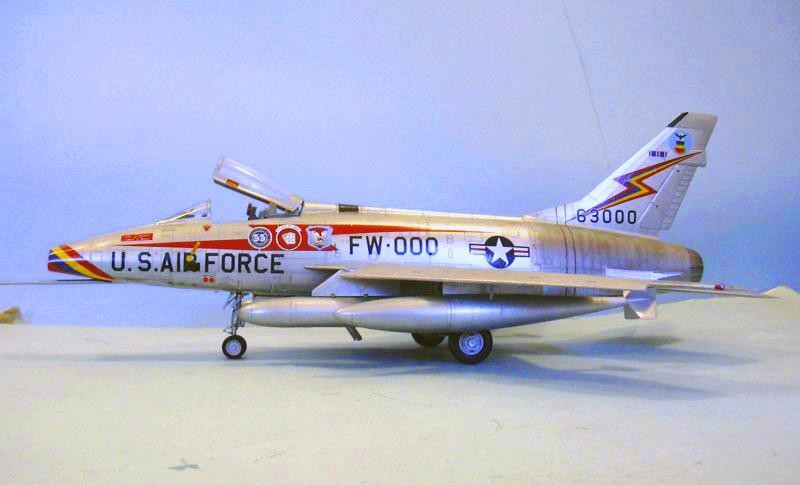
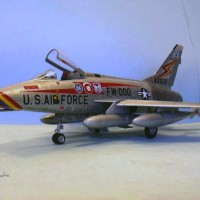
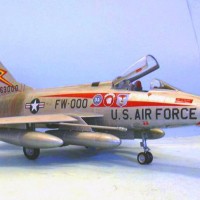
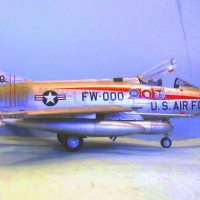
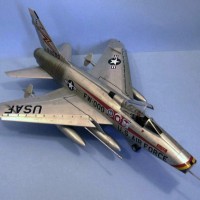
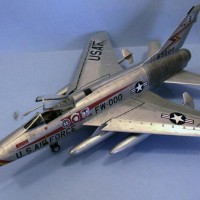
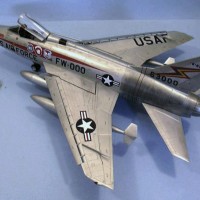



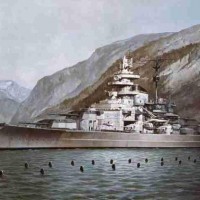
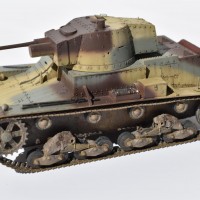
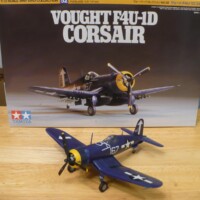
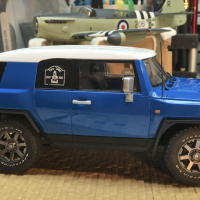
Good looking model Tom and great back story too! If I may though, suggest that the pics seem a bit too light. Maybe a bit darker or more contrast with the pale aluminum would make the plane look better. I bet the plane would really "pop" in natural sunlight!
Gary
"Natural sunlight" assumes a background one would not be mortified to see.
Lol, take her to the airport. She'd look right at home.:)
The only airport in Southern California I could get on to do such photography would be out at Chino, security being what it is these days.
Very nice Hun.
Nice finish Tom!